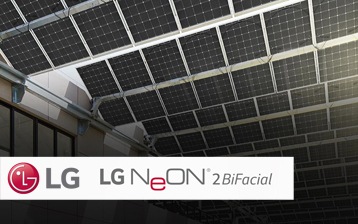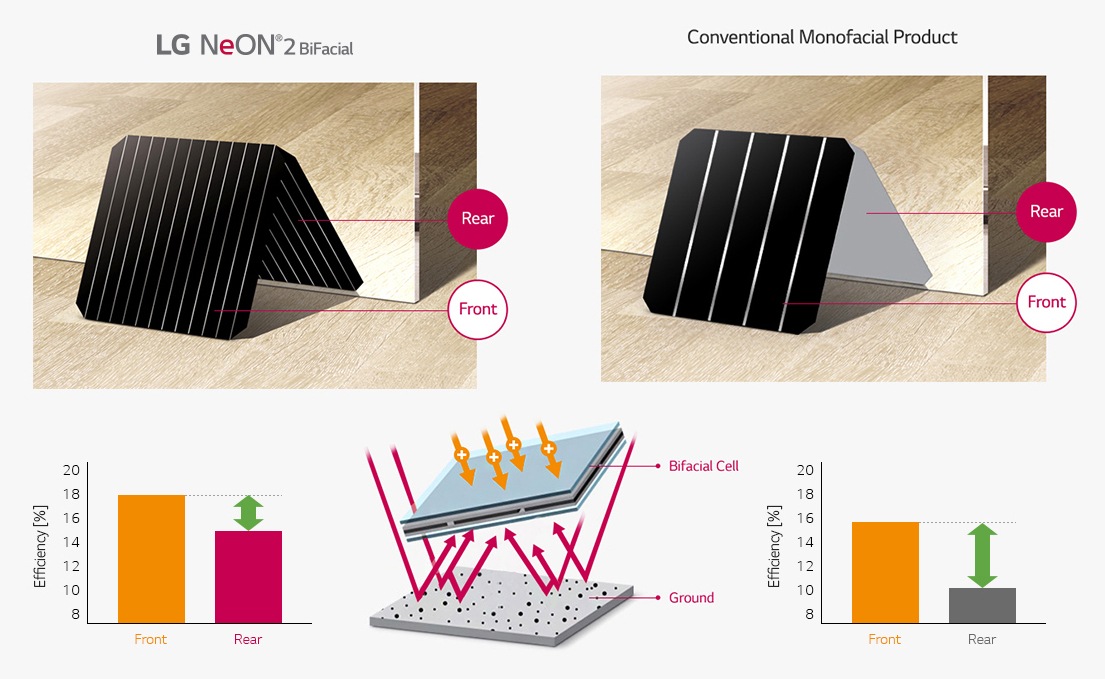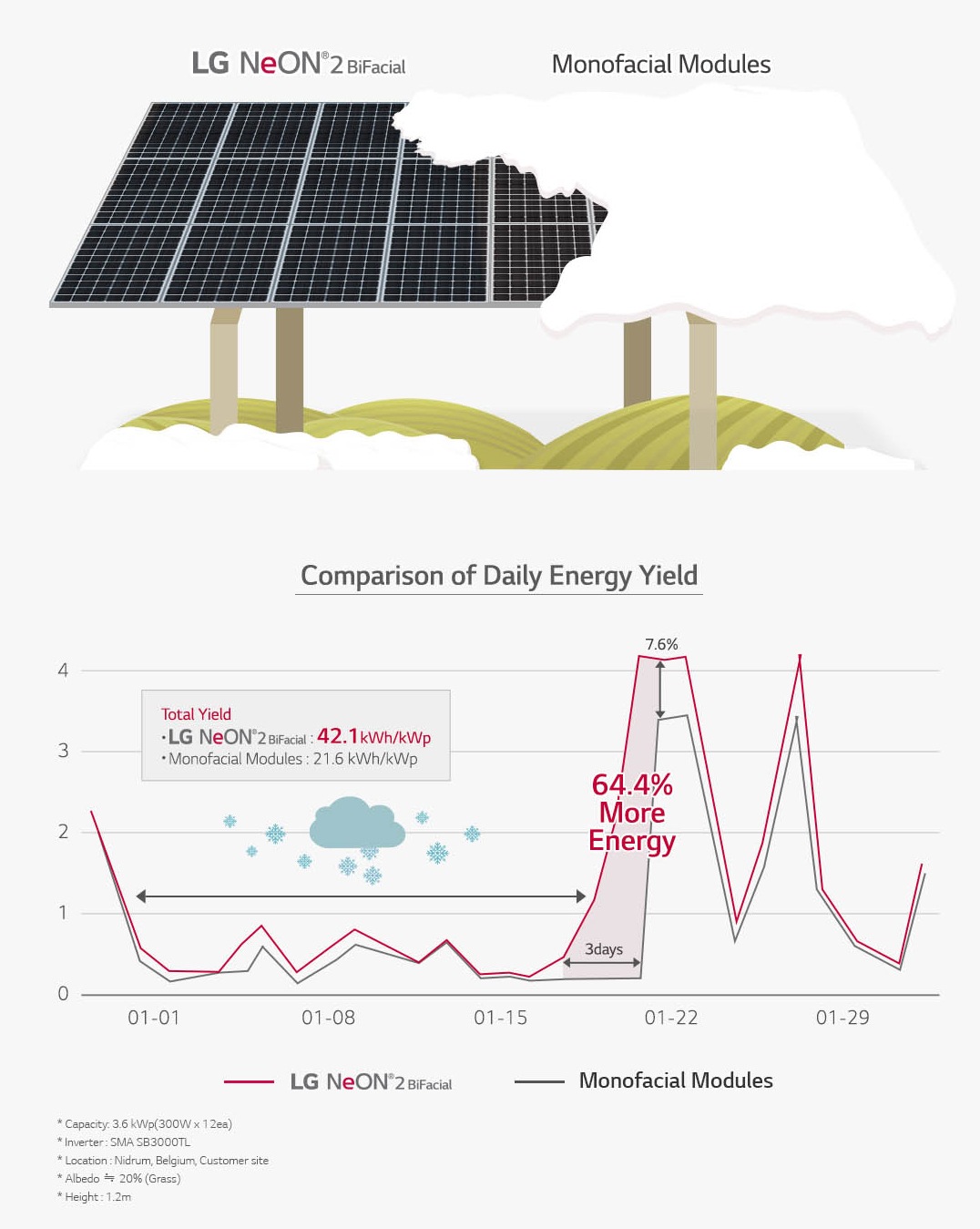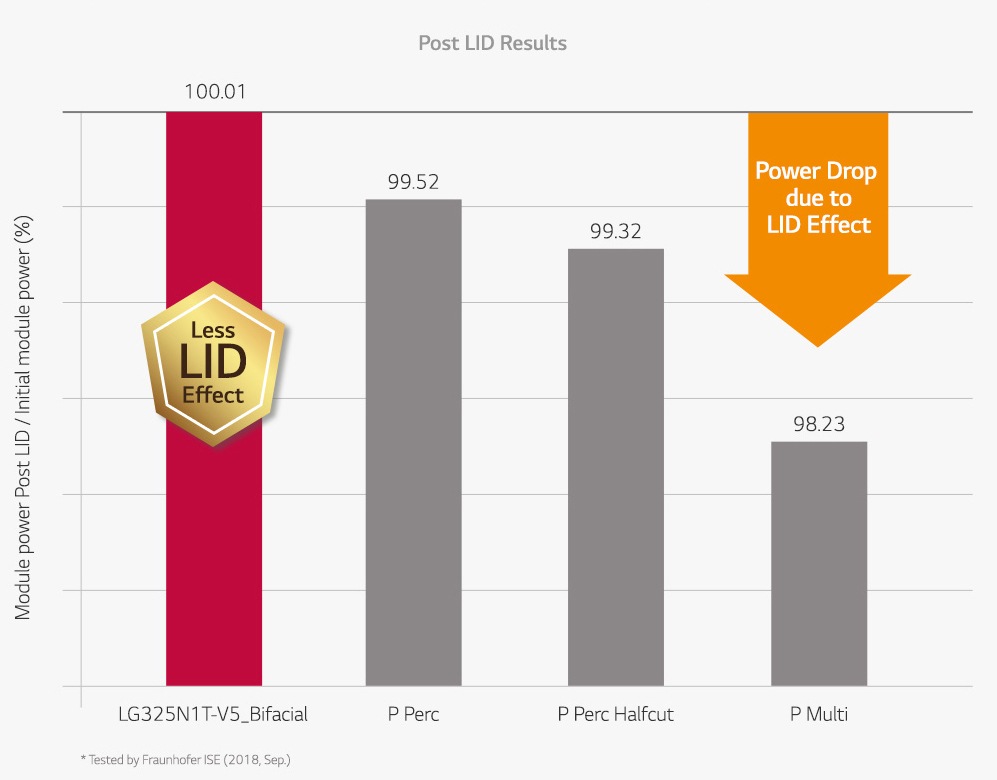LG NeON 2 Bifacial N1T-V5, is the LG module designed to absorb more light, generating more energy. Thanks to the Bifacial cells the panel uses both surfaces, to increase the production of the system.
This product uses, like the other NeON2 modules, CELLO technology, which replaces 4 bars with 12 thin wires, to increase the power produced, minimizing their dispersion.
The guaranteed quality of the N1T-V5 series
LG panels of the N1T-V5 series are modules that use solar energy from both the front and the back. This feature allows you to improve plant production by 30% in optimal conditions.
This model is available in the 335 W size, referred to the power of the front facade. The warranty is 25 years for the product, and a 25-year linear performance warranty is also included, with a 4.6% overall degradation in the 25th year.
Characteristics of the bifacial modules
The power of a bifacial module, however, depends on several aspects. There are in particular 3 factors that influence the increase in production compared to a classic monocrystalline module.
- Albedo
- Inclination
- Height
In the first case, albedo, it is the ratio between the light reflected from the ground and the incident light. The type of surface has a significant influence on the final value of Albedo.
A practical example can be that of white sand compared to grass. In the first case, the percentage of reflected light compared to the incident one is 60%, in the second case between 10 and 25%. With a higher surface Albedo, the increase in module production will be more significant.
In addition to this, the inclination of the panel and the height also affect the performance. In particular, these factors are important for the level of shading on the back of the module.
That’s why an installation on a roof of an inclined roof is not efficient since it would exclude the production of the rear cells.
In this regard, the assembly structures must also be carefully evaluated, which must be designed specifically to keep the system performance high.









